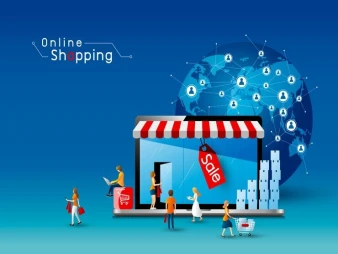Free support 24/7
Free support 24/7

Technological progress and continuous innovations form the backbone of modern development in the field of business and industry. Modern technical products and innovations are the mainstay for achieving development and growth in the market. However, these products come with unique challenges of marketing and communicating with the public. In this article, we'll look at those challenges and opportunities to consider when commercializing tech products and innovation, and how they can be overcome to achieve sustainable success.
Challenges in commercializing technical products and innovation:
1. Technical Complexity:
Technology products and innovations are often technically complex, making it difficult for the general public to quickly understand them. Therefore, marketing teams must have the ability to simplify complex technical concepts and present them in an easy-to-understand manner to the audience.
2. Speed of Change:
Technology is constantly evolving, which means that products become outdated quickly and need to be constantly updated. This puts pressure on marketing teams to ensure that products stay current and meet the audience's changing needs.
3. Intense competition:
The technology market is witnessing great competition between companies for public attention. This requires marketing teams to devise innovative strategies to stand out from competitors and gain attention.
4. Security and Privacy Concern:
As digital privacy and security concerns mount, companies must be aware of the need to protect audience data and articulate how their products address these issues.
Opportunities in commercializing technical products and innovation:
1. Direct interaction with the audience:
Through social media and digital platforms, companies can communicate directly with the audience and listen to their feedback and needs, which enables them to better improve their products.
2. Content Marketing:
Create valuable and educational content about tech products that help build audience confidence and increase their understanding of the products. Video tutorials and technical articles can be used to explain the benefits and how to use the products.
3. Story Marketing:
Customer success stories can be used to market technology products, as the audience feels a personal connection and trust when they see how the product has contributed to positive results for others.
4. Focus on Benefits and Solutions:
Instead of focusing on technical specifications, the focus should be on how products meet the needs and problems of the public, and how they can provide an effective and innovative solution.
5. Interaction with the developer community and interested parties:
In the world of technology, the developer community and enthusiasts play an important role in developing and improving products. Companies can interact with this community by providing means of communication and collaboration, such as forums and workshops, to collect feedback and suggestions that can be applied to improve the product.
6. Sustainable and Responsible Innovation:
Technology products can contribute to solving complex problems in various fields, such as environment, health and education. Marketing tech products that focus on sustainability and social responsibility can attract broad audiences and build a positive company image.
7. Experiential Marketing and Demos:
Providing clear demonstrations of how products are used and their benefits can help cut through technical complexity. Companies can hold demonstration events, workshops, and demos to showcase product capabilities and demonstrate how tangible benefits can be achieved.
8. Partnerships and Collaborations:
Collaboration with other companies or technology organizations can increase marketing impact and audience expansion. Partnerships with social media platforms or other technical organizations can contribute to increasing reach and enhancing awareness of the product.
9. Clarify Possible Challenges:
It is important for the public to have a clear understanding of the potential challenges when using technical products. Providing candid information about limitations, challenges, and potential solutions builds trust and understanding.
10. Continuous Submission of Improvements:
Communicating with the audience and receiving their feedback on the product can help improve and develop it in line with the audience's aspirations. Companies must build mechanisms to receive feedback and implement continuous improvement.
11. Provide distinguished technical support:
Providing high quality and effective technical support that enhances customer experience with the product. There should be channels for communicating with the support team and resolving issues quickly and professionally.
12. Use of Test Marketing and Practical Experiments:
Providing practical experiences to the audience, whether virtual or actual practical experiences, that can contribute to demonstrating the value of the product more clearly and convincing the audience of its benefits.
13. Use of word-of-mouth and recommendation marketing strategies:
If users are satisfied with the products, they are more likely to recommend them to others. Many technology buying decisions are based on word-of-mouth, so customers should be encouraged to share positive experiences.
14. Develop Multiple Marketing Strategies:
A variety of marketing channels and tools such as email, online advertisements, webinars, and technical conferences can be used to reach a diverse audience and increase awareness of products.
15. Benefit from data analytics:
Using data analytics and artificial intelligence to understand audience behavior and target marketing efforts more precisely. This data can be used to improve marketing strategies and better identify target audiences.
16. Innovation in payment methods and experience:
Part of the marketing experience may be offering innovative payment options or unique user experience methods. For example, offering subscription trials or pre-purchase trials can help ease concerns and motivate customers to buy.
17. Clarifying the vision for the future and innovation:
Focusing on how the product contributes to future aspirations and adopts sustainable innovations can attract audiences looking for products that can meet their needs.
m future.
18. Directing efforts towards the target segments:
Technology products may target specific market segments, such as small and medium-sized businesses or professional users. These segments must be precisely identified and marketing efforts directed towards them in appropriate ways.
19. Developing training programs and certificates:
Providing training programs that contribute to teaching the public how to use and benefit from technical products effectively can create stronger bonds between the company and customers.
20. Innovation in Customer Experience:
Providing a distinctive customer experience that includes easy interaction with the product, a seamless user experience, and exceptional customer service that can contribute to building lasting relationships and customer loyalty.
21. Transparent and Honest Marketing:
Focusing on transparent and honest marketing contributes to building a good reputation for the company. Clearly articulating product advantages and technical and technological limitations helps the public make an informed purchasing decision.
22. Experience Virtual Products and Virtual Reality:
The use of virtual reality technologies to enable the public to experience products realistically before purchasing can contribute to motivating purchases and demonstrating the benefits of products.
23. Recruitment of Influential Personalities and Trusted Testimonials:
Using technology influencers to promote products and provide trusted recommendations can have a significant impact on purchasing decisions.
24. Activate the unique customer experience:
Providing unique customer experiences such as a special tech event or interactive session can have a positive impact on the company's communication with the public.
25. Using direct links with innovators:
Connecting with innovators and independent developers can contribute to the development of an effective and innovative solution, and can contribute to building a network of collaboration and support for product development.
In short, marketing technical products and innovation requires multiple and integrated strategies based on innovation, understanding the needs of the public, and directing efforts towards providing real value and a distinctive user experience. By keeping abreast of technological developments and exploiting emerging opportunities, companies can build a strong and influential presence in the market for technical products and innovation.
In conclusion of this article, it is clearly shown that the commercialization of technical products and innovation presents both interesting challenges and exciting opportunities at the same time. By introducing new and innovative technology products and effective communication with the public, companies can build a solid reputation and achieve sustainable success in a competitive and evolving market.
Companies should adopt a variety of marketing strategies that focus on simplifying technical concepts and explaining the benefits of products in an attractive way. These strategies must be responsive to the aspirations of the public and based on providing a distinctive customer experience.
Moreover, social media techniques and the use of digital media represent an opportunity to interact directly with the public and spread marketing messages effectively. Companies should also leverage data analytics to better understand audience needs and improve their marketing strategies.
With the increasing challenges in the world of marketing and technology, innovation and adaptation remain the key ingredients for success. Companies must stay abreast of industry developments and regularly update their products and strategies to meet the expectations and needs of the public.
In short, marketing technical products and innovation requires advanced strategic thinking and continuous innovation. By providing effective value, a distinctive experience, and strong interaction with the public, companies can achieve sustainable success and strengthen their position in the ever-changing advanced technology market. We hope that you liked the article and do not forget to share your opinion with us in the comments.

Flash sales are not just a temporary marketing tool. They are a smart tool to quickly drive sales and increase engagement in your store

تعرف على الطريقة الذكية اللي تخليك تستفيد من تجارب عملاءك السابقين في تسويق منتجاتك الجديدة وزيادة المبيعات
You can create your store easily